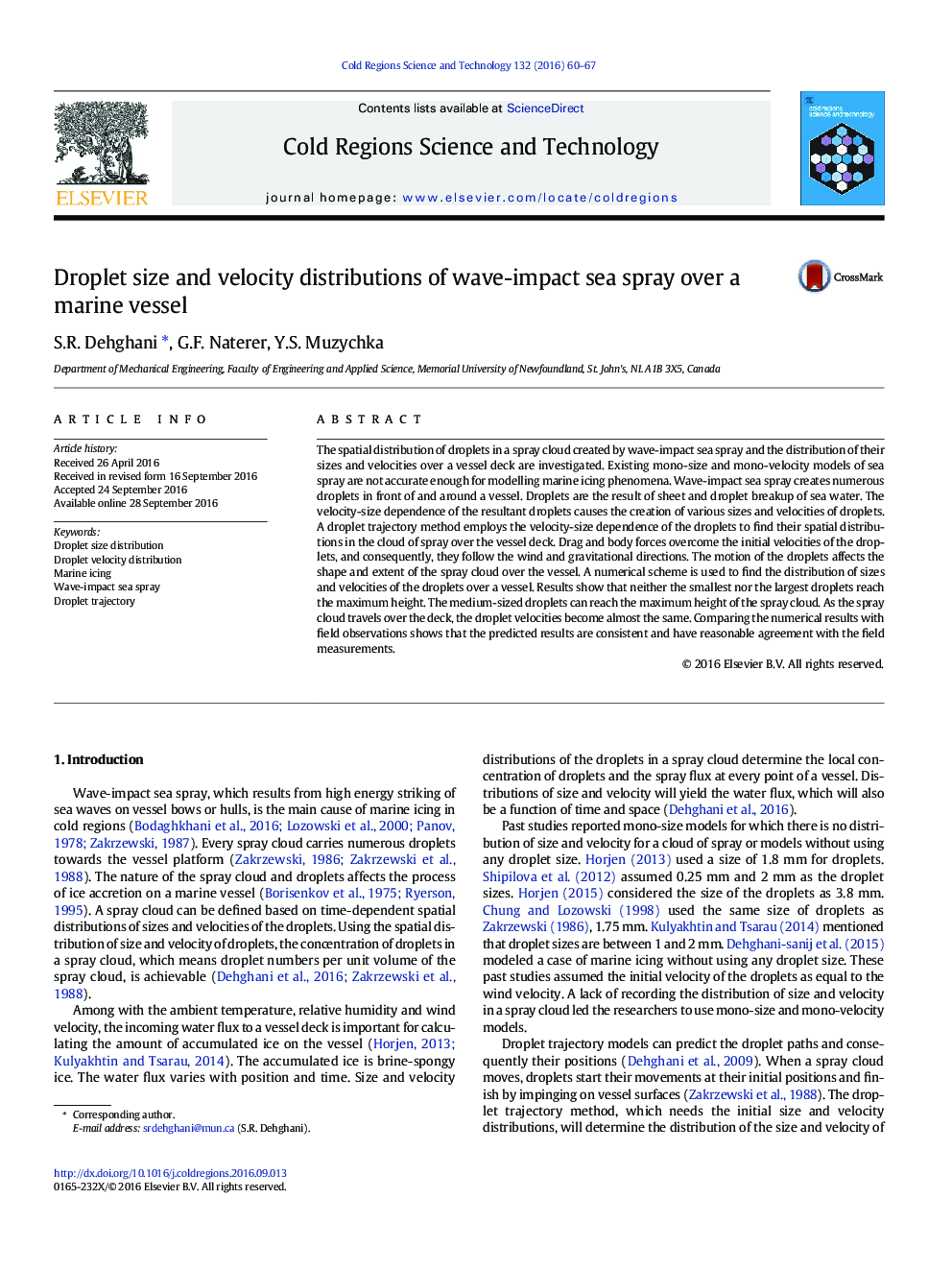| Article ID | Journal | Published Year | Pages | File Type |
|---|---|---|---|---|
| 4675604 | Cold Regions Science and Technology | 2016 | 8 Pages |
•Wave-impact sea spray causes distributions of size and velocity over a vessel.•Largest and smallest droplets cannot reach the highest heights of the vessel.•Drag and body forces determine trajectories of droplets in a cloud of spray.•The extent of the spray over the MFV is compatible with the field observations.
The spatial distribution of droplets in a spray cloud created by wave-impact sea spray and the distribution of their sizes and velocities over a vessel deck are investigated. Existing mono-size and mono-velocity models of sea spray are not accurate enough for modelling marine icing phenomena. Wave-impact sea spray creates numerous droplets in front of and around a vessel. Droplets are the result of sheet and droplet breakup of sea water. The velocity-size dependence of the resultant droplets causes the creation of various sizes and velocities of droplets. A droplet trajectory method employs the velocity-size dependence of the droplets to find their spatial distributions in the cloud of spray over the vessel deck. Drag and body forces overcome the initial velocities of the droplets, and consequently, they follow the wind and gravitational directions. The motion of the droplets affects the shape and extent of the spray cloud over the vessel. A numerical scheme is used to find the distribution of sizes and velocities of the droplets over a vessel. Results show that neither the smallest nor the largest droplets reach the maximum height. The medium-sized droplets can reach the maximum height of the spray cloud. As the spray cloud travels over the deck, the droplet velocities become almost the same. Comparing the numerical results with field observations shows that the predicted results are consistent and have reasonable agreement with the field measurements.
Graphical abstractFigure optionsDownload full-size imageDownload as PowerPoint slide
